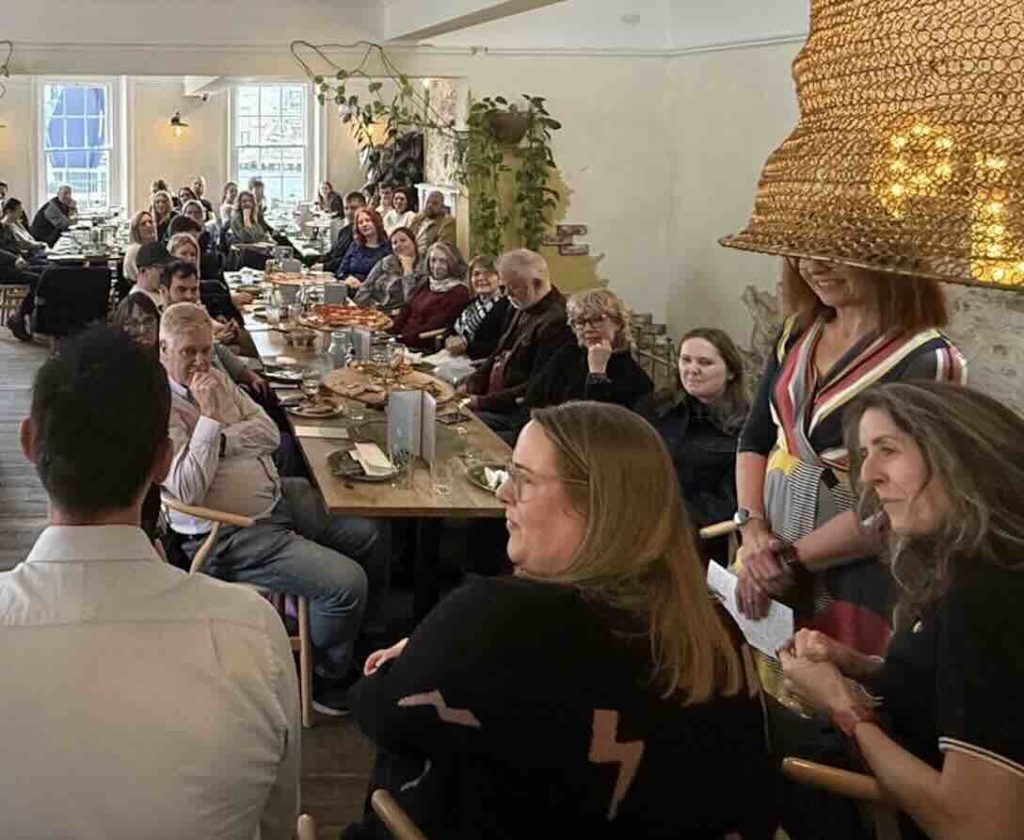Let’s learn and create together!
Book your placeBuild With People, Not For People
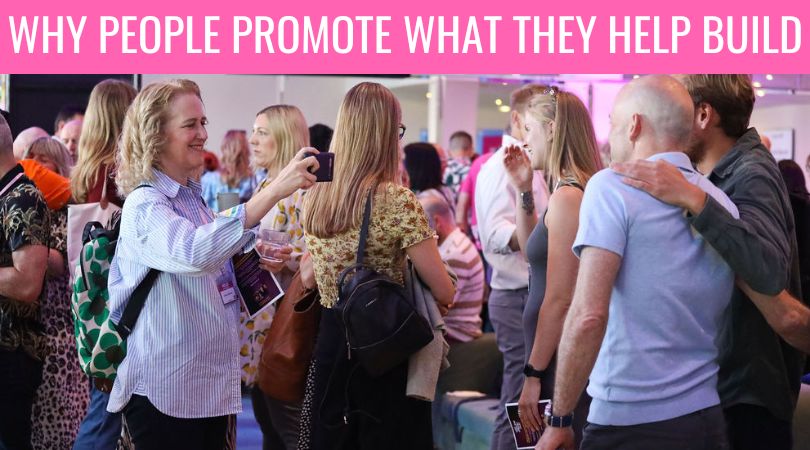
The best promotion doesn’t come from being pushy, but active participation.
There’s a change happening in how we grow communities, create content, and build momentum around our work. For years, the dominant narrative was simple: shout louder, post more, get noticed, and hope people care.
Something else is gaining traction, something far more effective and enduring.
It’s the shift from me to we.
Let’s examine what this shift truly means and what occurs when you create something with people, rather than for them.
This article is based on the events following Creator Day, highlighting the wave of support, posts, and diverse perspectives shared by people. It also serves as a way for how we get people to rally alongside us and promote what we set out to do.
What I am sharing with you is what I learned from this years occasion on the theme of people wanting to join in.
Creator Day As A Catalyst For Collective Promotion
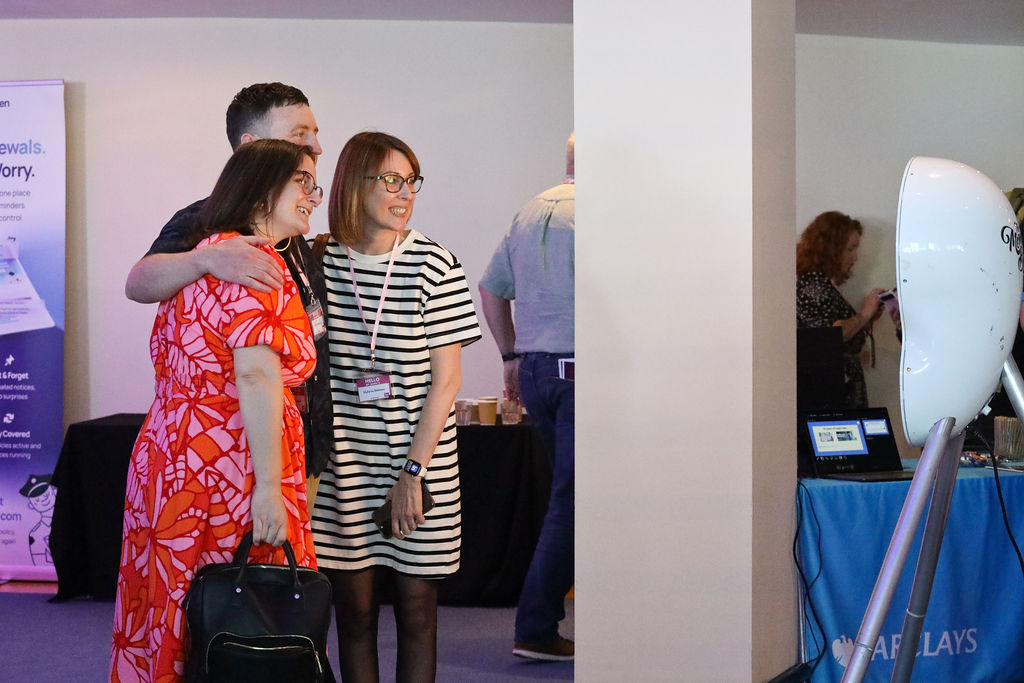
Creator Day 2025 was the year attendees became amplifiers. Promotion came not from a central voice but from many, each carrying the event’s good feeling into their own spaces.
We delivered a live Indie Business Club Podcast, which saw a 20% increase in first-day downloads. This wasn’t from a press release or a push, it was the result of the crowd that was in the room now becoming on-the-ground promoters.
Other attendees saw newsletter subscriber jumps in the days that followed. The reason? The event lived on as people shared what they experienced. The boost wasn’t random, it was rooted in people feeling in it, not marketed to.
On LinkedIn, there were noticeable increases in post engagement as people reflected on the day. Some shared pictures and videos, while others shared what they learned or expressed what the day meant to them. There was no single call to action, rather, the amplification was organic, with many people contributing.These outcomes weren’t accidental.
They were the result of three key ingredients:
1) People felt seen. They weren’t passive audience members; they were contributors to the atmosphere and momentum.
2) They had a role. Whether it was joining in with the events we delivered during the week, people showed up in ways that mattered.
3) It created a collective memory. The story of Creator Day didn’t belong to one person. It belonged to everyone who experienced it.
The impact shows that when people are part of the build, they naturally become part of the structure.
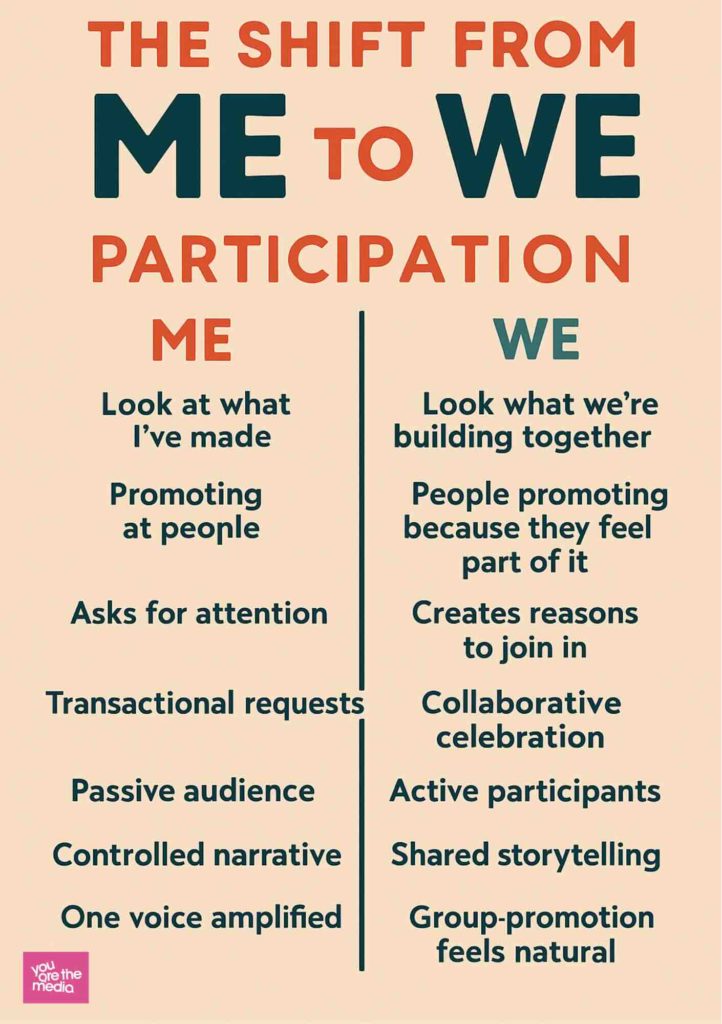
From “Look What I’ve Made” to “Look What We’re Building Together”
At the heart of the “me” approach is the person. The creator. The entrepreneur. The brand. It’s often rooted in a desire to be seen,“Look at me, notice my work, validate my efforts.”
This isn’t inherently wrong. in fact, we all start here. We want our work to matter and begin by trying to gain attention.
Over time, we realise that real traction doesn’t come from people admiring from a distance. It comes when people step in. It’s the shift from exhibition to co-creation.
Where once the goal was to show off a finished product, the new goal is shared ownership. “Look what we’re building together” creates space for inclusion, pride, and participation. And when people feel like they’re part of something, they don’t just support it, they advocate for it.
From Promotion At People To People Promoting Because They Belong
In the “me” model, promotion is directional: I make something, and I tell you about it.
In the “we” model, people promote not because they’re told to, but because they feel it’s theirs to share. They were part of it. They belong.
This isn’t just about reach, it’s about meaning. People promote what they helped build. They bring others in. They tell the story, not because they’re asked to, but because it matters to them.
This flips the model entirely. Promotion isn’t something you do to people, it’s something people do with you, because they’re invested.
From Asking For Attention To Creating Reasons To Join In
The old playbook asks for attention: “Watch this video.” “Click this link.” “Buy now.”
But the modern approach is about designing reasons to join in: “Can you help shape this?” “What would you do?” “We’re working on something together, would you join in?”
This changes the posture from demand to invitation.
People are overwhelmed by attention-seeking tactics. Attention is not from creating AI action models or a business version of yourself as a toddler. It comes from people being involved.
When you create something participatory, it could be a live event or a shared activity, you give people a reason to step forward, not scroll past.
From Transactional Requests To Collaborative Celebration
The “me” mindset is transactional, the “we” mindset is celebratory.
The action becomes its own reward. You create momentum together. When people are involved, the success feels shared. For instance, the day after Creator Day, people are invited to start the day in the sea. It’s a great shared feeling when you hear people laughing and just the upbeat noise around you.
It’s not about someone doing a favour for you, it’s a celebration they’re proud to join.
In this way, community becomes the marketing. The participation becomes the promotion. People tell others about what they did and enjoyed.
From Passive Audience To Active Participants
Audiences are passive. Participants are engaged.
For years, marketing focused on “building an audience,” as if our job was to gather spectators and keep them watching. But a passive audience isn’t the end goal. The real value comes when people become part of the story and have a voice. People show up, not to watch, but to contribute.
This doesn’t mean everyone becomes a creator. Participation can take many forms: sharing a thought, attending an event, passing something on, even silently cheering from the sidelines. The key is that people feel involved.
You don’t need a massive audience. You need a group of people who care. That’s where trust, advocacy, and growth begin.
From Controlled Narrative To Shared Storytelling
One of the hardest shifts for many creators is letting go of control.
The “me” approach wants to polish, perfect, and deliver a tightly controlled story. But the real energy comes when the story isn’t just yours anymore. It’s shared. It evolves. It grows in the hands of others.
That’s where shared storytelling comes in. When someone tells their version of the journey, how they found your work, what it means to them, it adds dimension and credibility.
Shared storytelling isn’t a threat to your message. It’s a multiplier.
From One Voice Amplified To Many Voices Resonating
Amplification used to mean shouting louder. The “me” model depends on one person (or brand) gaining enough visibility to be heard.
But visibility is no longer the bottleneck. Trust is. That comes from the voices who speak with genuine belief.
When people share your work in their own words, from their own perspective, it lands differently. It’s not just promotion, it’s active participation.
When those voices echo a shared truth, it spreads faster, lasts longer, and hits harder than any campaign ever could.
From Self-Promotion Feeling Awkward To Group-Promotion Feeling Natural
Self-promotion often feels uncomfortable, as it may seem ego-driven, forced, or just plain awkward.
Something changes when you’re not doing it alone. When it’s a collective effort, it feels natural. You’re not shouting about yourself, you’re inviting people into something bigger.
You’re not the centre of attention, you’re part of the group. This perspective makes it easier to participate, express yourself, and contribute.
When people around you believe in the same thing and champion each other’s work, it lifts everything and we all feel a part of the narrative.
How To Start The Shift Your Side
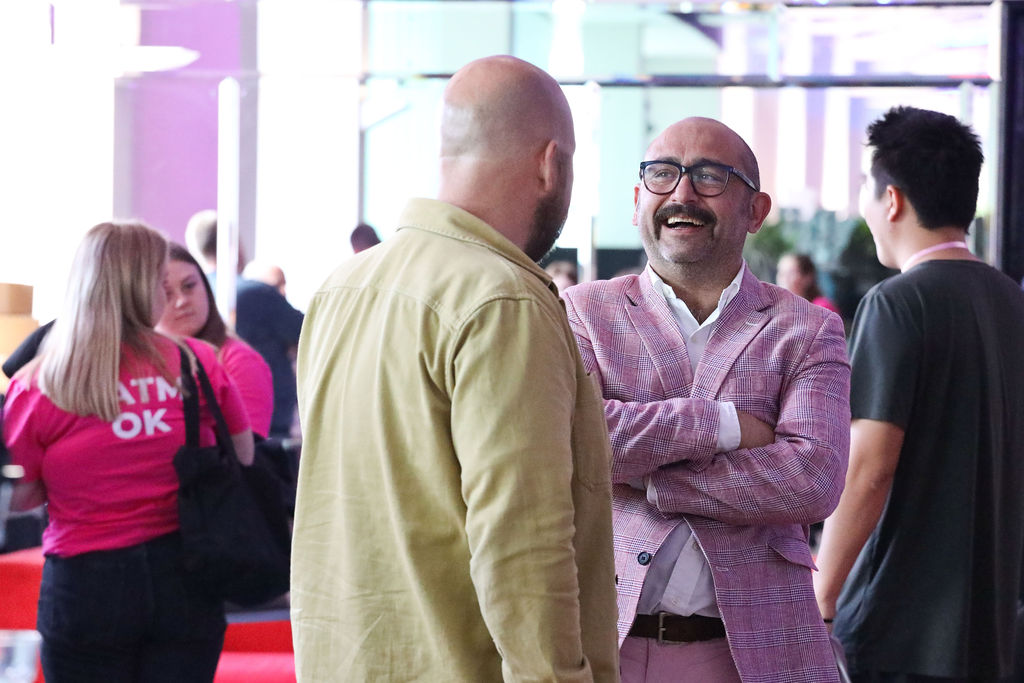
Here are a few ways to move from me to we in your own work:
1) Design for participation, not just consumption. Ask yourself: where can people step in, not just look on?
2) Create rituals and shared moments. Whether it’s a live event, a weekly newsletter, or a group discussion, give people a reason to come together.
3) Share your platform. Invite others to tell their story through your work. Pass the mic.
4) Let people shape the journey. Ask questions. Listen and shape accordingly. Make space for feedback and co-creation.
5) Celebrate together. Spotlight the group. Make the win feel collective.
Let’s Round-Up
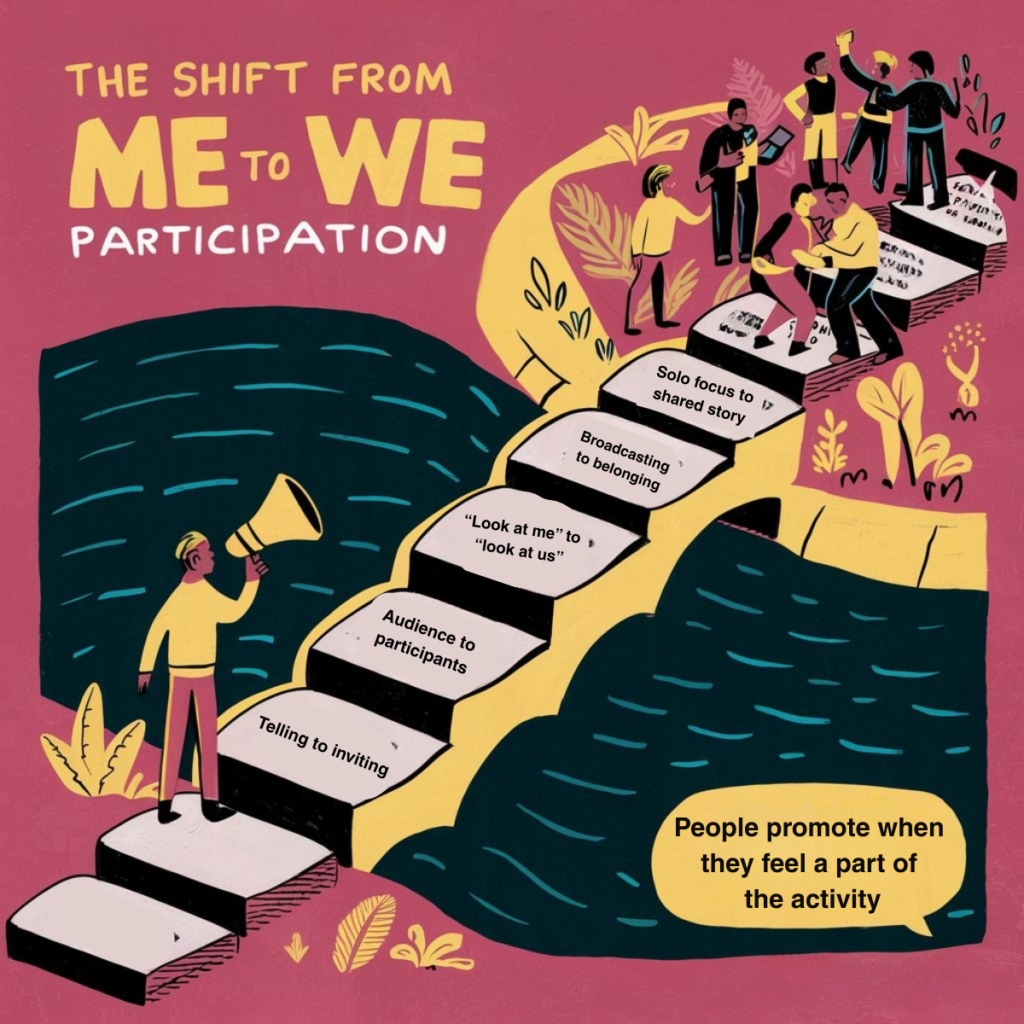
People promote what they are part of. They don’t need to be asked to share it, they want to.
The ‘me’ to ‘we’ approach is how people support each other to be seen, rather than an algorithm deciding.
It works by not pushing harder, but by opening up. Not by shouting louder, but by inviting the right people in.
People crave connection, friendship and feeling a part of something, when they do, they become the reason it spreads.
Build Your Community
A brand new programme from Mark Masters for businesses wanting to make that next growth step.
Find out moreYATM Club
Where non-conformist business owners come to work, learn and make friends. Click here
